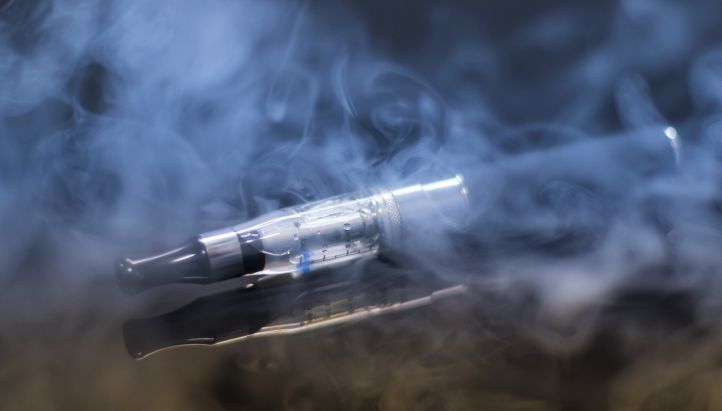Vaping Causes Lung Damage in Just 3 Days of Use, New Study Says
E-cigarette use, or vaping, can damage lungs in as little as three days of use, according to a new study from The Lundquist Institute (formerly known as LA BioMed) and the University of Rochester.

LOS ANGELES — E-cigarette use, or vaping, can damage lungs in as little as three days of use, according to a new study from The Lundquist Institute (formerly known as LA BioMed) and the University of Rochester.
For the study, male and female mice were exposed for two hours per day for three days to aerosols vaped from e-cigarettes using propylene glycol as the “carrier fluid,” common among these products. Exposure for just three days was enough to incur sufficient damage to their lungs, setting the stage for long-term chronic lung damage. This damage occurred both with e-cigarettes containing nicotine, and those with just the propylene glycol carrier fluid.
The study also found that more inflammatory responses to e-cigarettes containing both propylene glycol and nicotine occurred in female mice, suggesting women might be more vulnerable to negative health impacts from vaping.
The study also provides novel insights to the lung damaging effects of vaping—reporting for the first time that acute exposure to e-cigarette aerosol containing polyethylene glycol alone can induce oxidative stress in lungs. It also showed that vaping does not have to occur over long periods of time to be harmful.
The study was a collaborative effort between The Lundquist Institute and the University of Rochester, with some of the key analytic components leading to its conclusions performed at The Lundquist Institute. Dr. Virender K. Rehan led The Lundquist Institute’s involvement in the study, while Dr. Irfan Rahman oversaw the University of Rochester team.
Funding for the study was provided by the National Institutes of Health and the Tobacco-Related Disease Research Program. The results were published in FASEB BioAdvances in an article titled “Dysregulated repair and inflammatory responses by e-cigarette-derived inhaled nicotine and humectant propylene glycol in a sex-dependent manner in mouse lung.”
“Our work provides unequivocal evidence that vaping “juices” even without flavors or nicotine are harmful to lungs,” said Rehan. “In other words, any form of vaping is not safe.”
The Centers for Disease Control and Prevention recently said there were more than 1,000 people in the U.S. who had suffered probable lung injury from e-cigarette use, with 18 deaths attributed to vaping. Use of vaping products containing both nicotine and THC (the active ingredient in marijuana) has skyrocketed in recent years, as it allows people to consume these products in a more convenient and discreet fashion.
And while many e-cigarette users switched from conventional cigarettes for purported health reasons, the limited track record of vaping products and uncertain quality control may in fact make e-cigarette use a risky choice of its own—particularly given the results of this latest study.
“Vaping is an emerging public health issue, particularly among young people,” said Dr. David Meyer, PhD, President and CEO of The Lundquist Institute. “We are extremely supportive of Dr. Rehan and his team for their work which will hopefully save lives and prevent severe lung injuries.”
